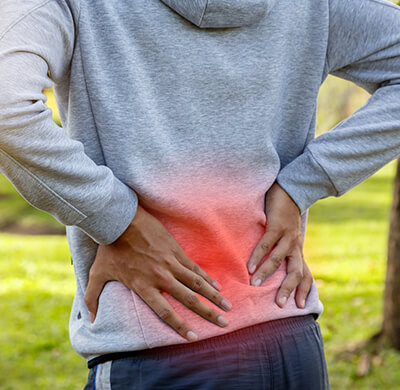Welcome to the Patient Education Library of Texas Medical Institute
Tendon Transfers
Introduction
Tendon transfers are used to restore function after an injury or medical condition has compromised function in the hand. Loss of function in the hand can occur because of several types of problems including paralysis from nerve injury, tendon loss, and muscle loss. Tendon transfer surgery relocates a healthy tendon to restore the movement in an affected joint. Surgery is followed by a period of splinting and hand therapy rehabilitation.Anatomy
Your wrist and hand is composed of many bones that provide the underlying structure for the other tissues. Your fingers and thumb are made up of bones called phalanges. The bones are connected with strong ligament tissues. Tendons are strong tissues that attach your muscles to your bones and allow movement.The extensor tendons begin near your elbow and continue to the back side of your fingers and thumb. As the extensor tendons reach your fingers, they become flat and thin. The extensor tendons attach to your phalanges via a complex system. The extensor tendons allow your fingers and thumbs to straighten and perform fine coordinated movements.
Your flexor tendons begin in your forearm and around the elbow and continue to the palm side of your fingers and thumb. Each finger has two flexor tendons and your thumb has one. Fibrous pulleys guide the flexor tendons and keep them close to your phalanges during motion. This provides optimal mechanics for flexor function. The flexor tendons allow your fingers and thumbs to bend, grasp items, and perform fine coordinated movements.
Causes
Loss of function in the hand can occur because of several problems which affect the muscles and tendons directly or indirectly. These include paralysis, nerve injuries, tendon loss, and muscle loss. The nerves that control the muscles in the hand can cause paralysis as a result of direct trauma to the nerves, spinal cord injuries, traumatic brain injuries, or neurological conditions, such as stroke, cerebral palsy, and multiple sclerosis. Rheumatoid arthritis can cause tendons to rupture. Muscles and tendons can be severed by traumatic injuries or affected by scar tissue from burns.Symptoms
A tendon injury can cause your hand joints to feel painful and swollen. It may be difficult or you may not be able to straighten out or bend your wrist, finger, or thumb. Your finger joints may hyperextend and appear crooked. If the nerves are injured, your hand may feel numb and you may not be able to sense pain or temperatures.Diagnosis
Your doctor can diagnose a tendon injury by reviewing your medical history and examining your upper extremity. You should tell your doctor if you sustained an injury or if you have a neurological condition. Your doctor will carefully examine your joints and check strength, stability, and motion. Your doctor will test the sensation and blood flow to your extremity. X-rays may be used to identify bone fractures or other pertinent abnormalities.Your doctor will test each of your nerves individually to determine the level of a nerve injury and if a nerve is partially or completely severed. Nerve conduction studies measure how well a nerve works and help specify the site of injury. Doctors commonly use a nerve conduction velocity (NCV) test. During the study, a nerve is stimulated in one place and the amount of time it takes for the message or impulse to travel to a second place is measured. Electromyography (EMG) will also be performed. This requires small needle electrodes to be placed in the muscles being tested. The degree of muscle abnormality can then be determined.
Treatment
Tendon transfers are surgical procedures to restore absent functions. The procedures performed depend on the intended function and available functioning muscle/tendon units. Alternatives to tendon transfers include the use of special tools, splints, and prostheses.Surgery
Certain criteria must be met before a tendon transfer can take place. The joints must be flexible. Stiff joints may be freed with hand therapy or surgically released prior to tendon transfer. For optimal use, the affected portion of the hand should have sensation. Nerve repair surgery may sometimes be able to restore sensation prior the tendon transfer.Only healthy tendons with good functioning (strength and excursion) and good blood supply are considered for transfer. A tendon should be taken from an area where remaining tendons can perform its function. A tendon is usually transferred to restore only one movement or function. It usually only crosses one joint.
After you are anesthetized, your surgeon will make an incision to access the tendon(s) to be transferred and the area where the tendon will be attached. The selected tendon will be prepared. In some cases, tendons may be made longer by grafting additional tendon tissue. The tendon is appropriately routed to the attachment site. The more direct the line of pull, the better. Your surgeon will make a preliminary attachment and check the tension and function of the transferred tendon. The transferred tendon is secured with stitches using a weave procedure.
Recovery
After surgery, you will wear a splint or cast so your joints will not move, allowing the tendon transfer to heal. The degree and length of time for immobilization varies depending on the procedure that you had. Following immobilization, you will participate in hand therapy rehabilitation. Your hand therapist will show you exercises to help you regain strength, motion, and function. Some people continue to make gains from six months to a year following surgery.Tendon transfers can be very useful for restoring function, although they are usually not quite as strong or functional as the original tendon. A degree of functional loss will occur at the donor site. Recovery and surgical outcome is individualized. Your doctor will let you know what to expect.
Prevention
You should receive prompt treatment if you suffer an injury severe enough to involve anything more than the superficial layers of skin. In most cases, early treatment is associated with the best outcomes.Your hand therapist can recommend ways to perform your regular activities to help you avoid future injuries. To ensure the best recovery, it is important that you adhere to your splint-wearing schedule, attend all of your appointments, and participate in your hand therapy rehabilitation exercises as instructed.

Copyright © - iHealthSpot Interactive - www.iHealthSpot.com
This information is intended for educational and informational purposes only. It should not be used in place of an individual consultation or examination or replace the advice of your health care professional and should not be relied upon to determine diagnosis or course of treatment.
The iHealthSpot patient education library was written collaboratively by the iHealthSpot editorial team which includes Senior Medical Authors Dr. Mary Car-Blanchard, OTD/OTR/L and Valerie K. Clark, and the following editorial advisors: Steve Meadows, MD, Ernie F. Soto, DDS, Ronald J. Glatzer, MD, Jonathan Rosenberg, MD, Christopher M. Nolte, MD, David Applebaum, MD, Jonathan M. Tarrash, MD, and Paula Soto, RN/BSN. This content complies with the HONcode standard for trustworthy health information. The library commenced development on September 1, 2005 with the latest update/addition on February 16, 2022. For information on iHealthSpot’s other services including medical website design, visit www.iHealthSpot.com.






